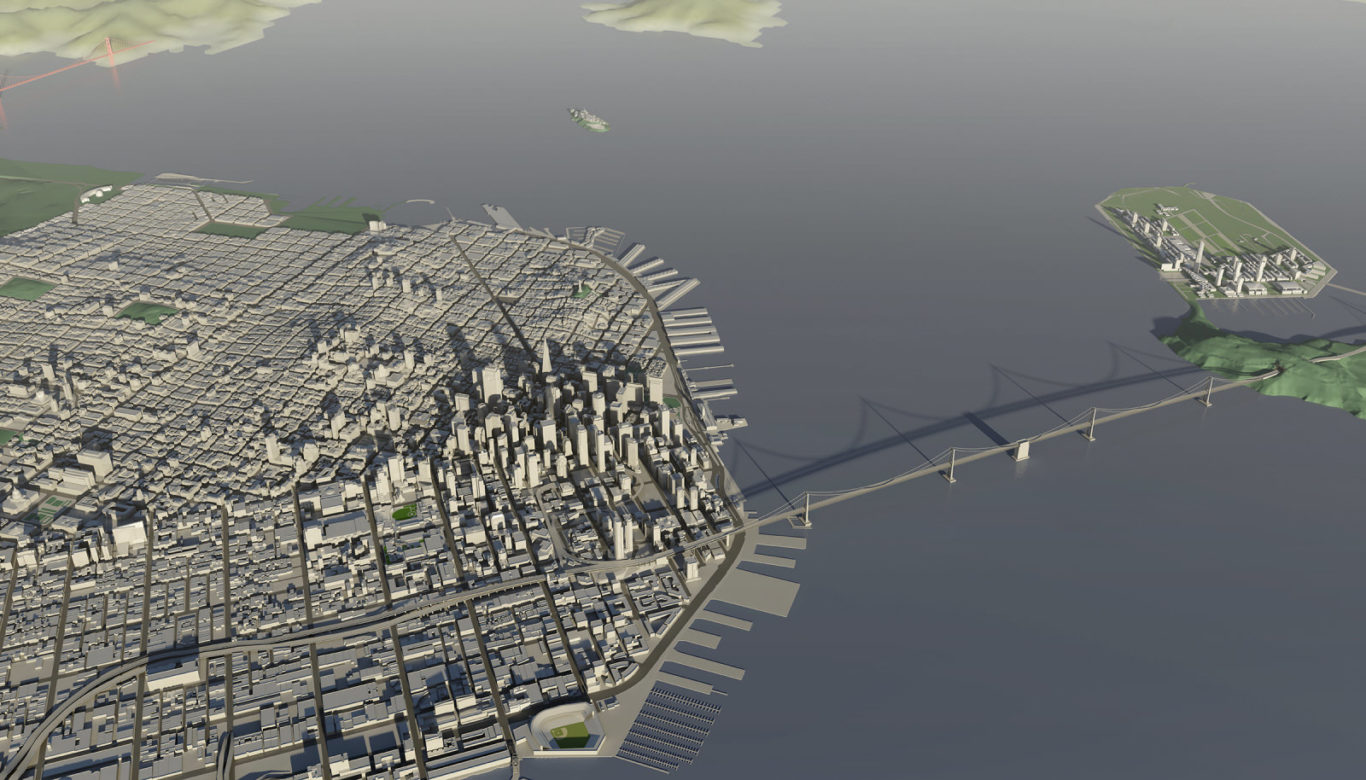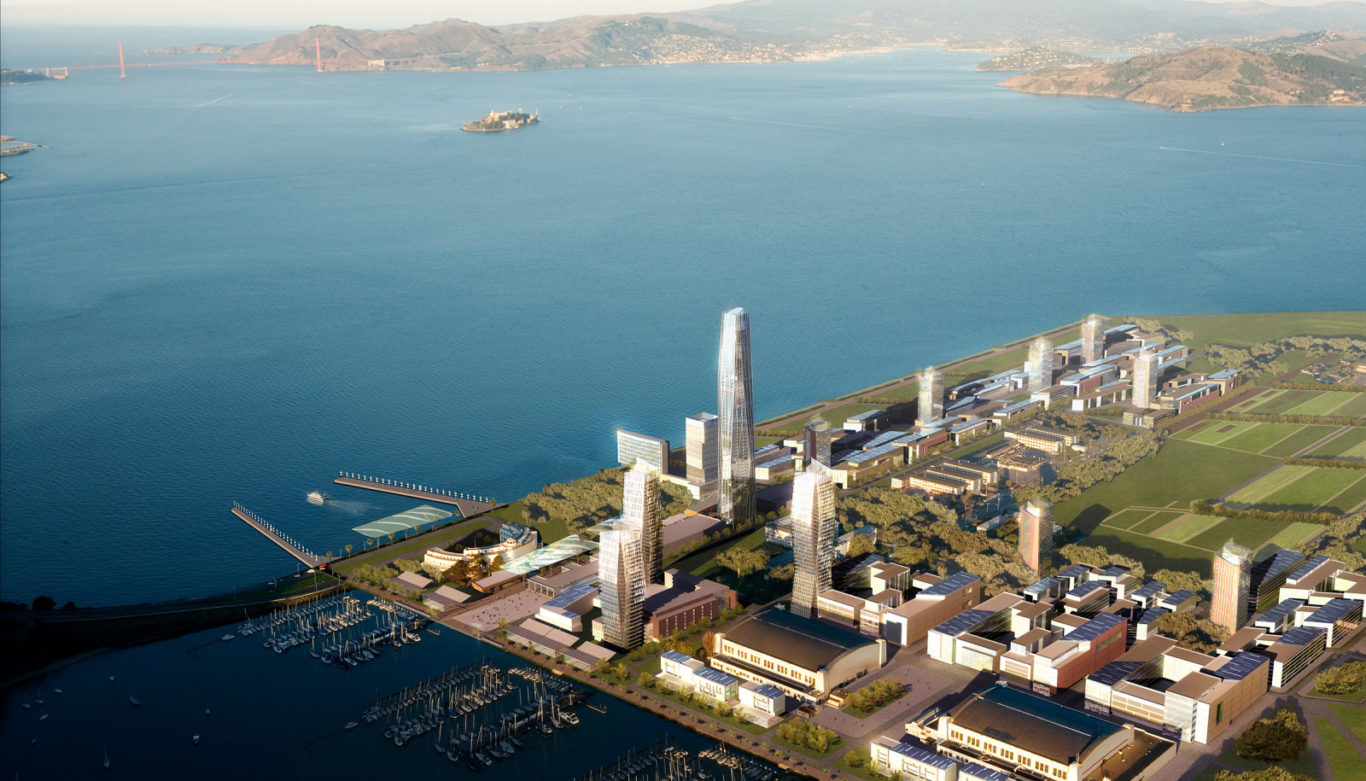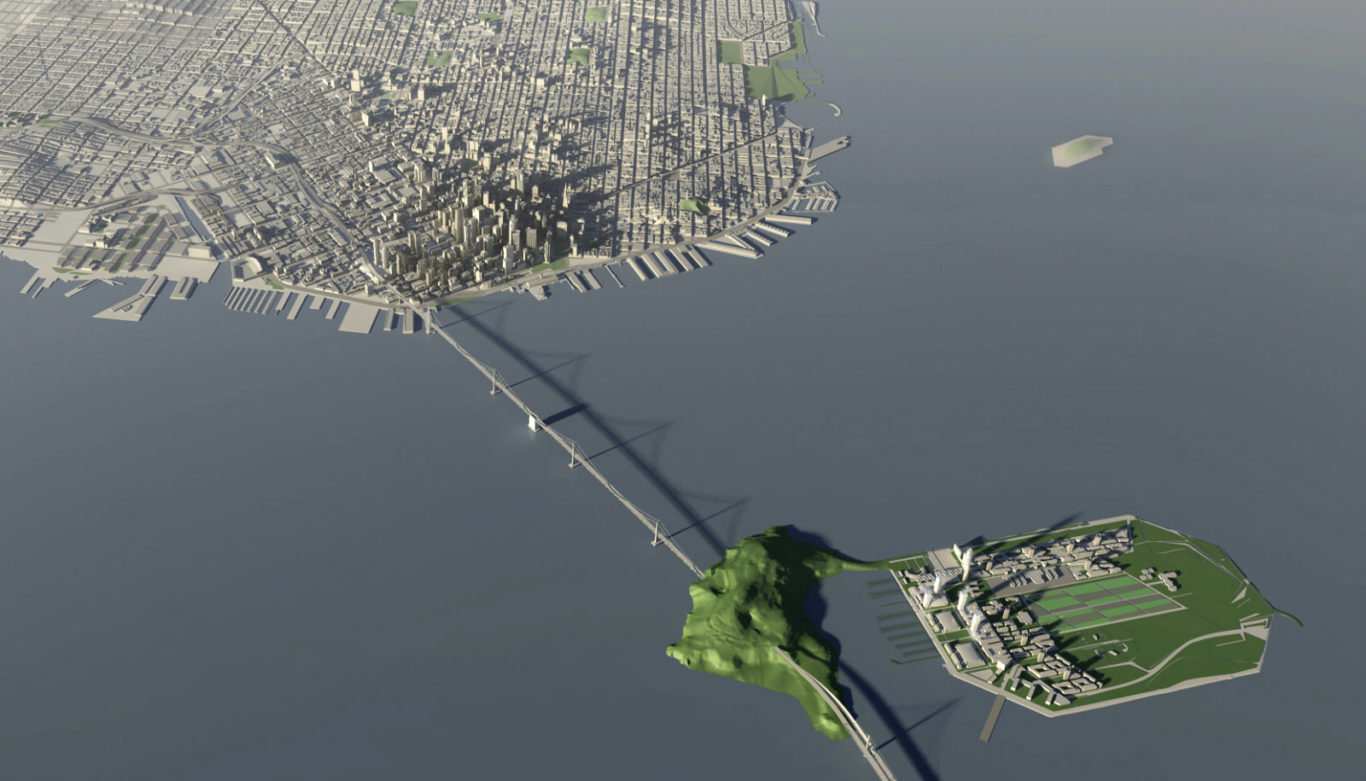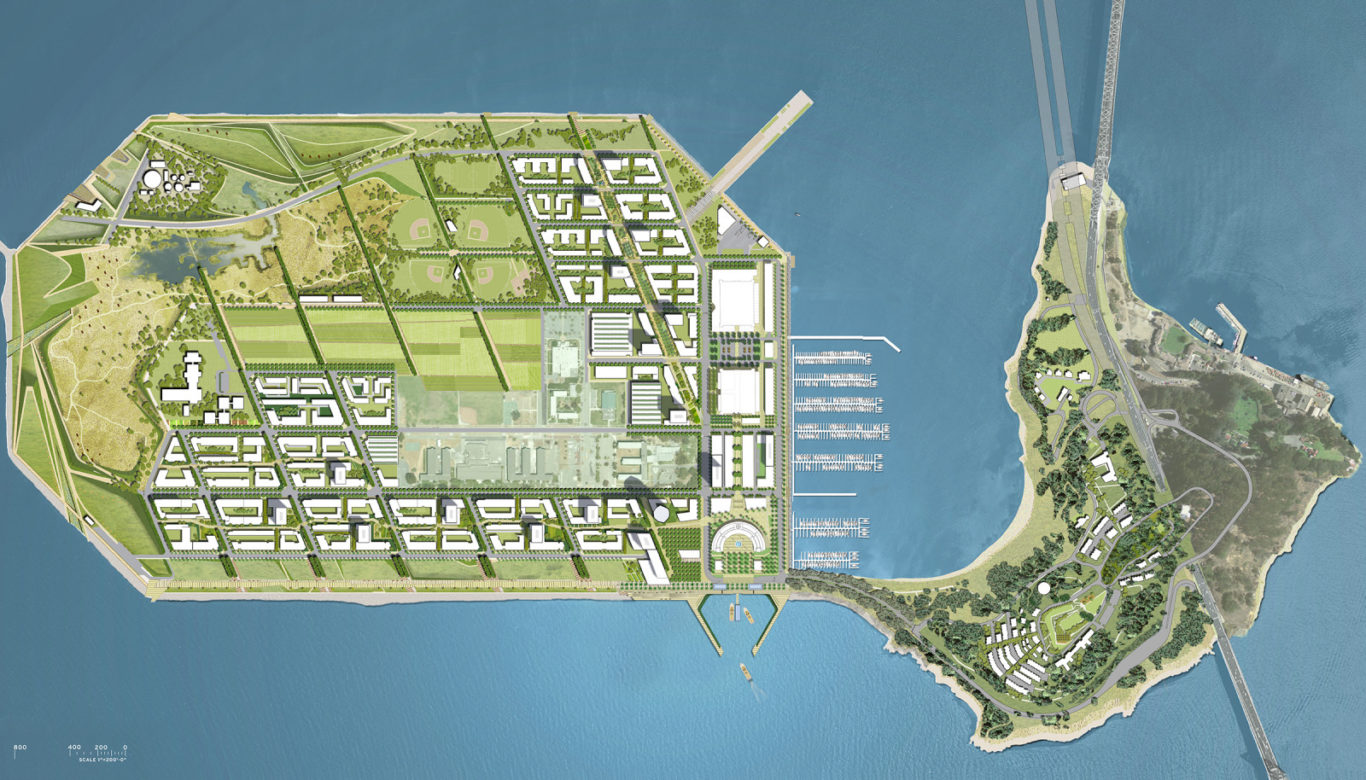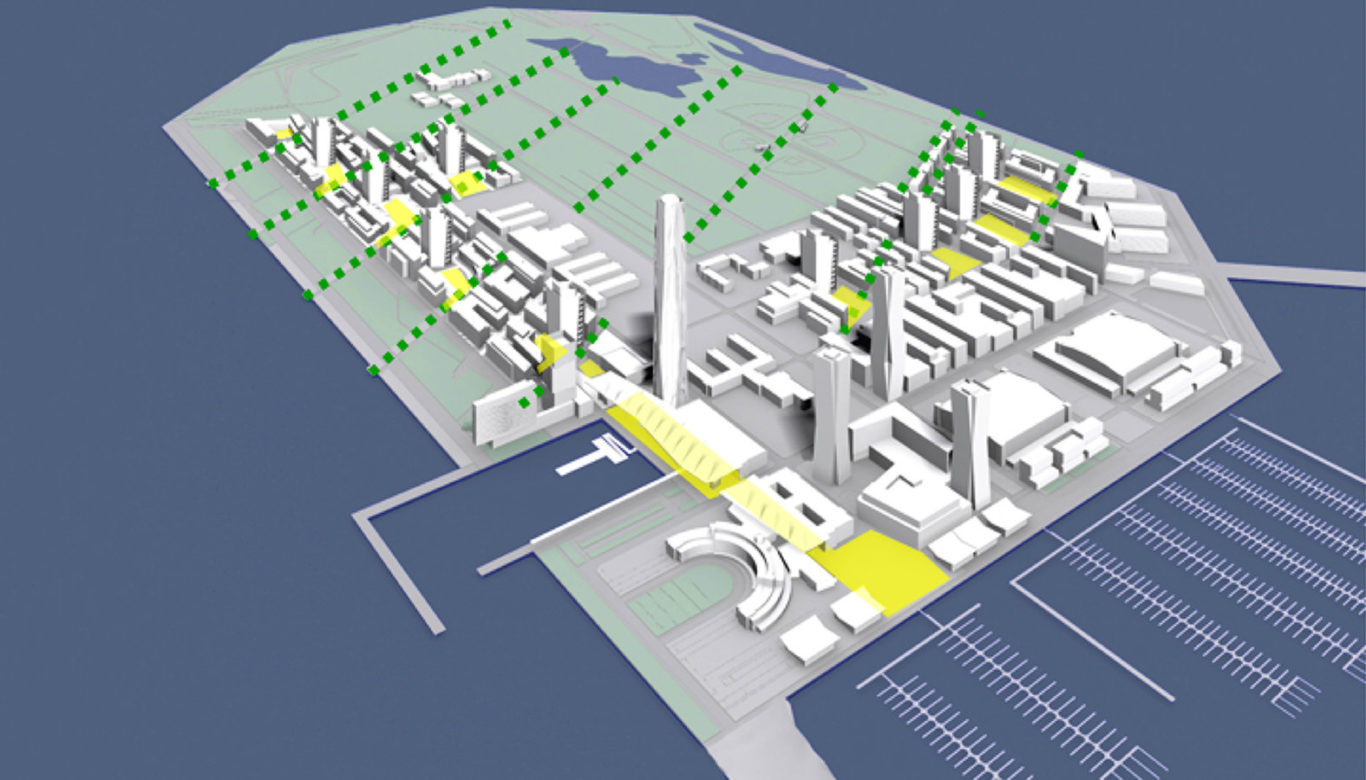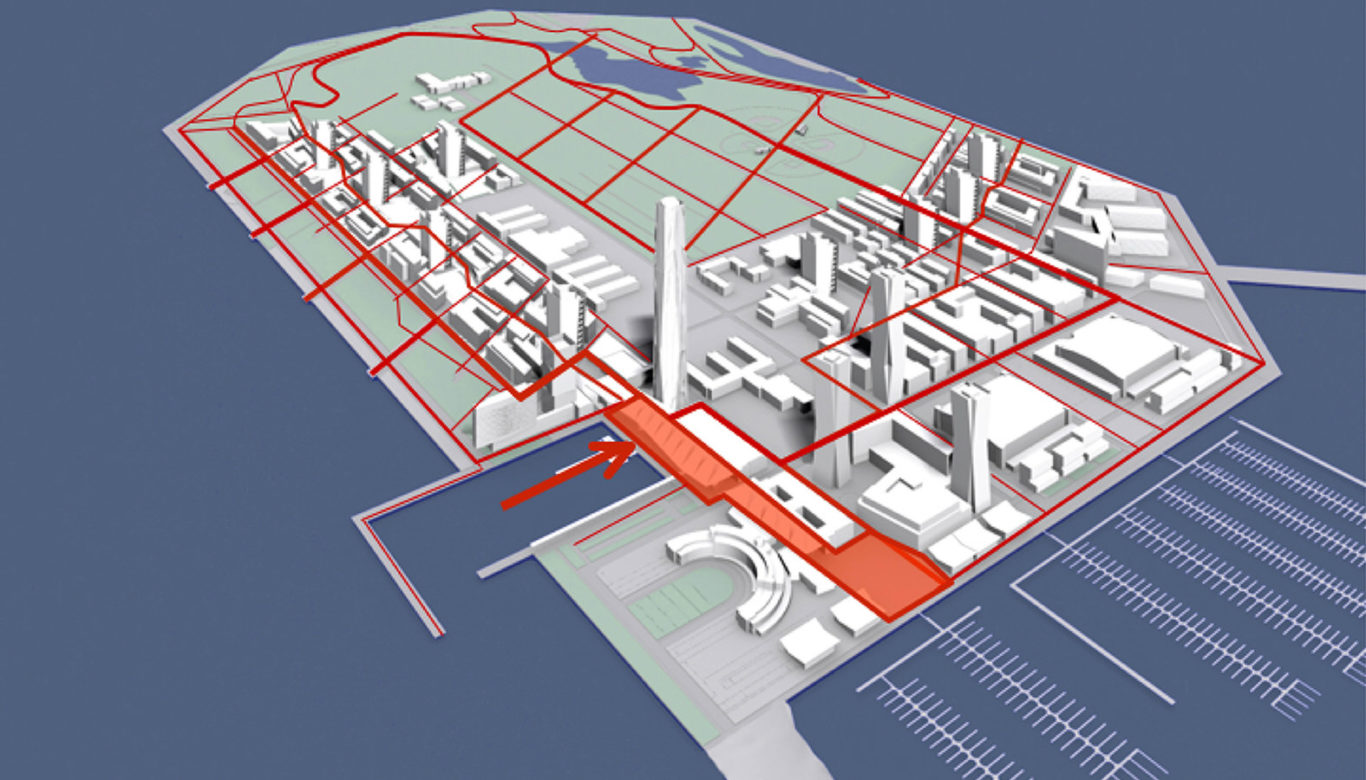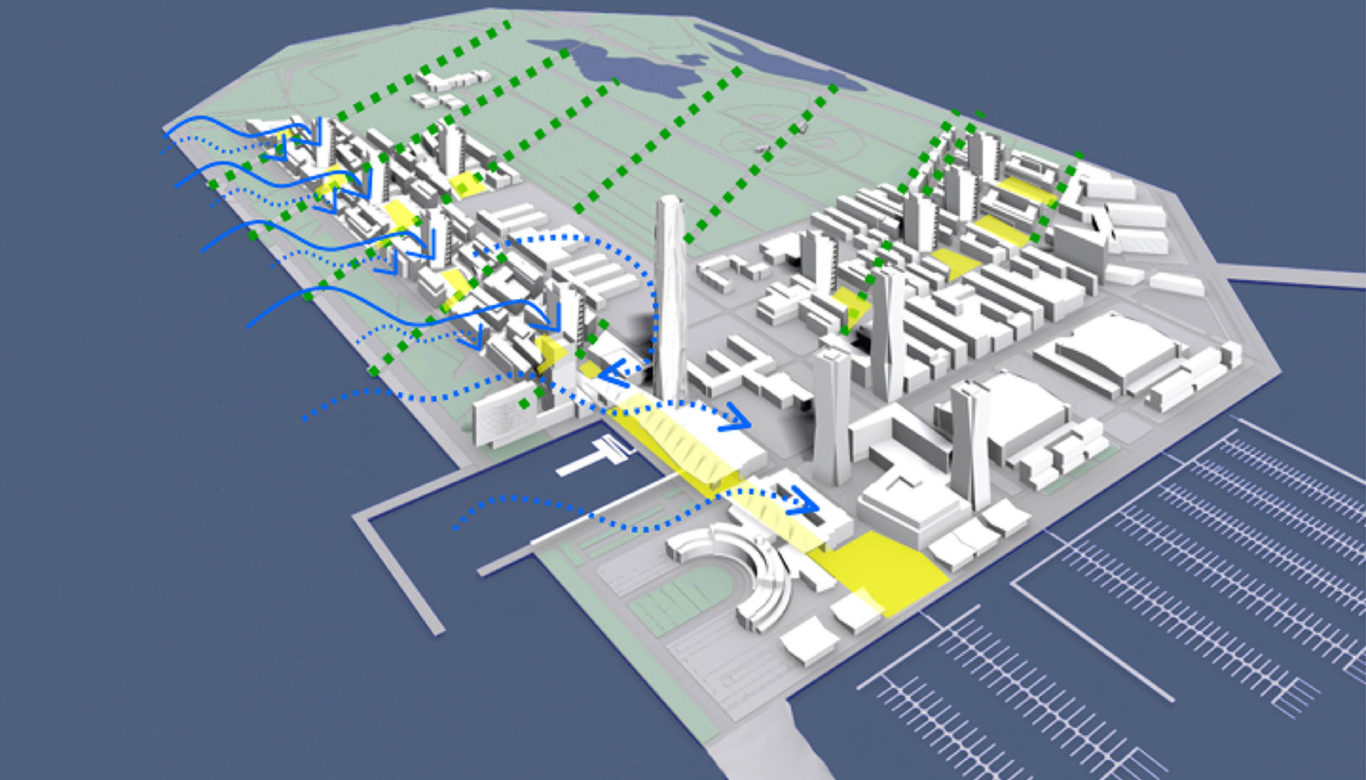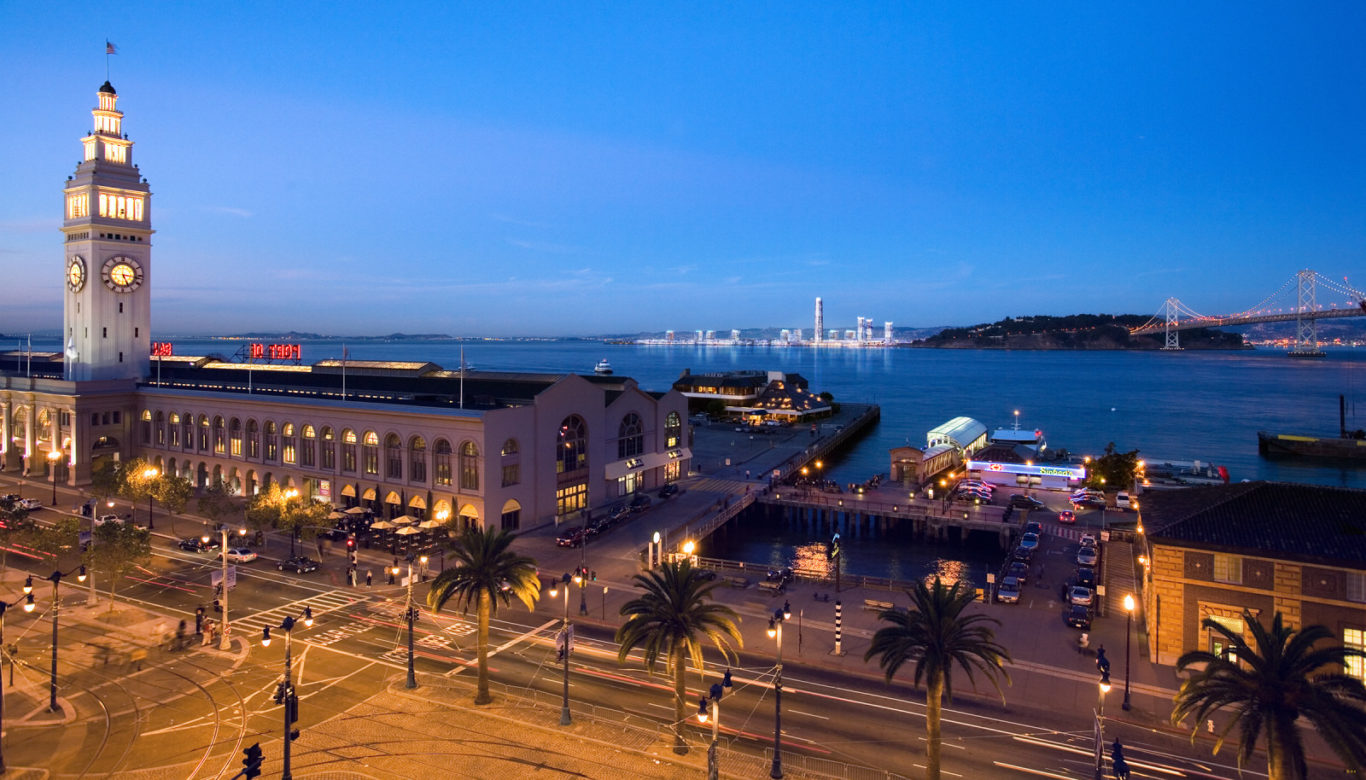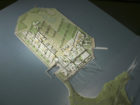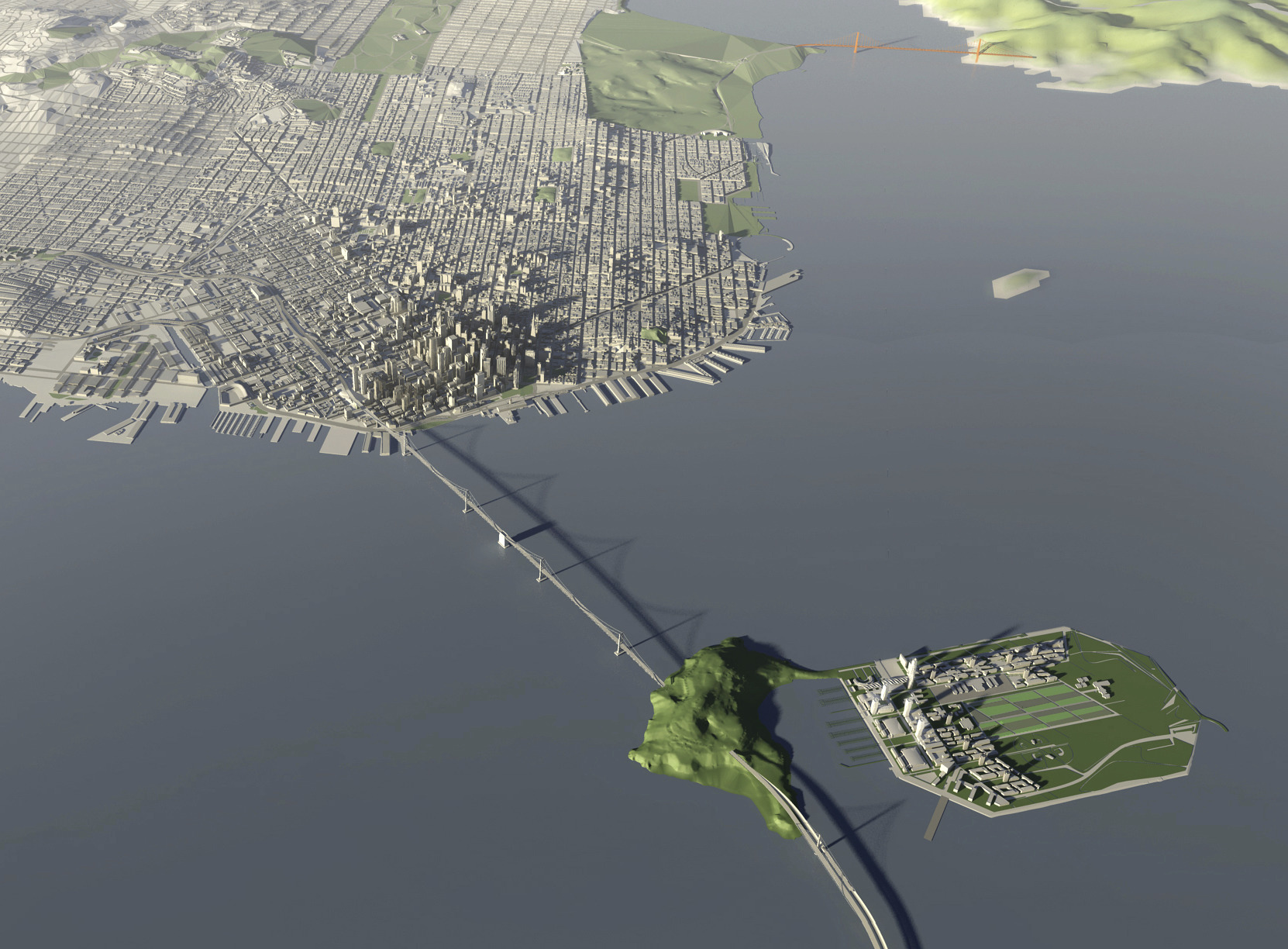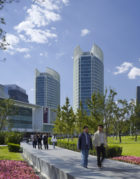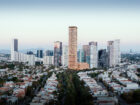SOM has created a bold new vision for Treasure Island, a 393-acre manmade island in the heart of the San Francisco Bay. Upon completion, the area will boast a diverse community with access to unprecedented open space, resource-conserving technologies, and a robust network of transportation options.
SOM’s vision drew fundamentally from sustainable principles and the powerful appeal of island life. The design proposes three compact neighborhoods organized around a town center and ferry terminal — a layout intended to encourage walking, bicycling, and using mass transit. Approximately 300 acres of the island will be set aside for open space, and all new landscaping will utilize native species.
Other sustainable strategies include greywater recycling, an extensive composting program, and the use of renewable grid-source power to meet the island’s energy needs. The development is designed to exceed California’s Building Efficiency Standards (Title 24) by 20 percent. The scheme represents San Francisco’s best opportunity to accommodate population growth with a minimal ecological footprint.
